65 years after OKC's sit-in, Clara Luper's 'radical love' still reverberates today
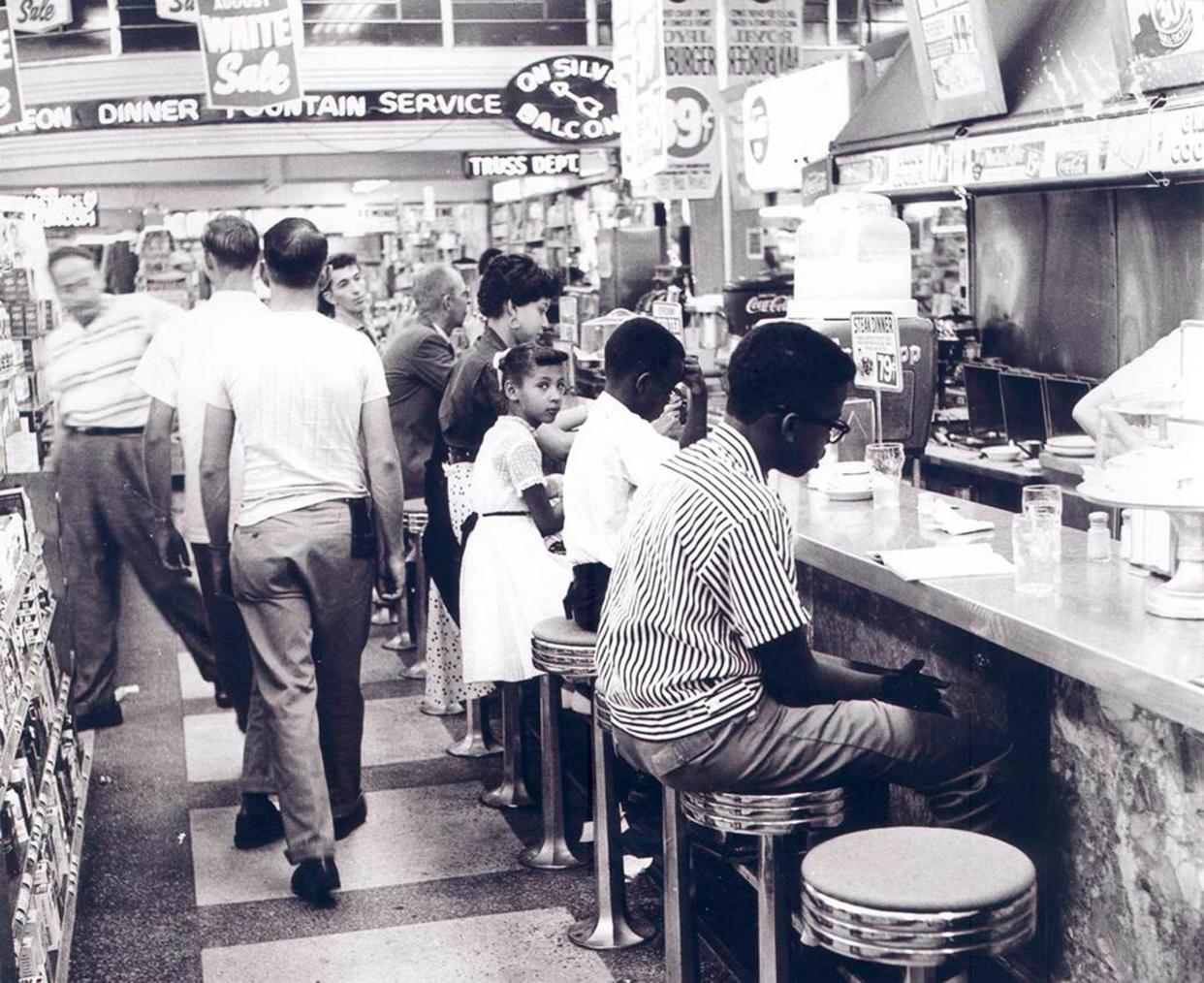
- Oops!Something went wrong.Please try again later.
Sixty-five years ago, an Oklahoma City teacher walked with 13 of her students and own children into a downtown drug store, asking for the right to eat in any restaurant they wanted, regardless of the color of their skin.
Led by Clara Luper, the students ranging from ages 6 to 17 sat at the Katz Drug Store lunch counter on Aug. 19, 1958. This was one of the first sit-ins in the country, a precursor to the Greensboro, North Carolina, sit-ins in 1960, which are commonly considered the start of a national wave of sit-ins.
The demonstration changed Katz's segregation policy after a few days and launched an entire sit-in movement in Oklahoma City that lasted the next six years until the passage of the Civil Rights Act of 1964. Many Oklahoma City restaurants and businesses were desegregated, thanks to the sit-in participants' relentlessness.
"I'm so glad that we came down that night and sat down," said Marilyn Luper Hildreth, Luper's daughter and sit-in participant, at a 2022 event. "Because when we sat down, young people all across this nation started standing up."
The students and Luper were spit on, kicked, ridiculed and abused. Luper was jailed many times for her peaceful protests. Today, she is a larger-than-life figure for many in the Black community who thank her for the rights they have today. Others remember her as a caring teacher. Those who didn't know her personally are inspired as they hear her story told by others.
A series of events commemorating the anniversary of the Katz sit-in was planned for this weekend by the Clara Luper Legacy Committee, culminating in Saturday's march and sit-in reenactment and a Sunday evening celebration program at Fifth Street Baptist Church. Saturday's participants will march from Frontline Church at 1104 N Robinson to Kaiser's Grateful Bean Cafe at 1039 N Walker, where the reenactment will take place inside.
The "Freedom Fiesta" kicked off with a gospel music concert and an art show on Thursday and Friday nights, respectively.
More: What to know about Freedom Fiesta events that celebrate 65th anniversary of OKC sit-ins
How the Oklahoma City sit-in movement started under Clara Luper
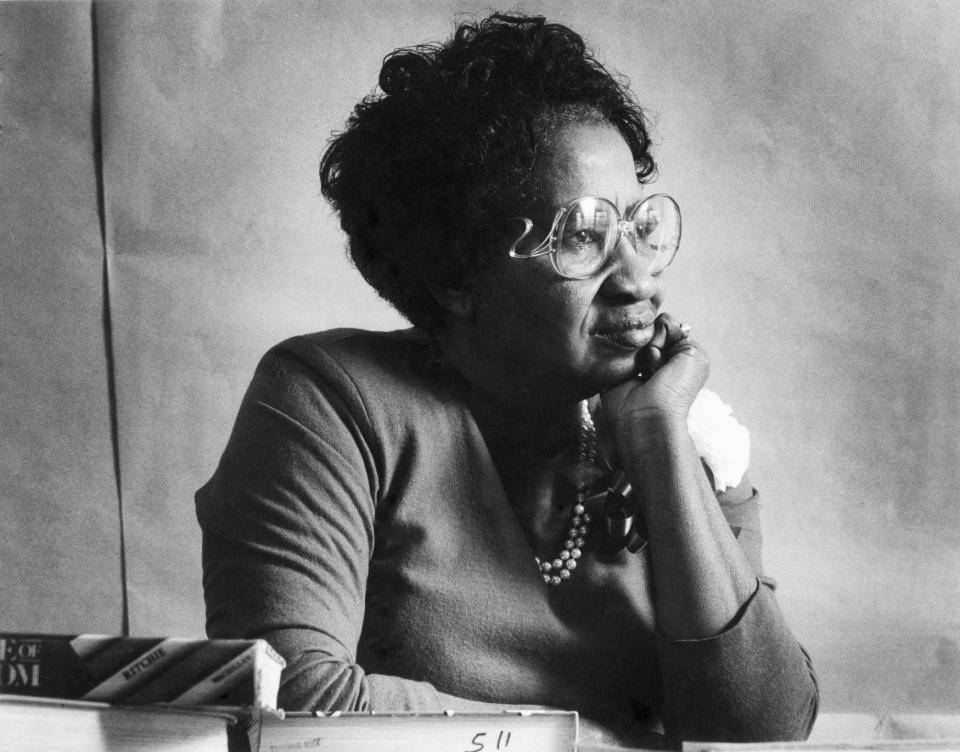
Born in 1923, Luper graduated from high school in the all-Black town of Grayson at the top of her class. After graduating in 1944 from Langston University, Luper became the first Black student to enroll in the history department at OU in 1950, where she earned a master’s degree.
Luper was an American history teacher for 41 years, beginning at Dunjee High School and later teaching at Northwest Classen and John Marshall high schools. In 1989, she retired from John Marshall High School after teaching there for two decades.
In 1972, Luper campaigned for a U.S. Senate seat. Although unsuccessful, her Senate campaign was notable as she was one of the first women in the country to run for national office. Luper died on June 8, 2011.
In the 1950s, Luper helped organize the NAACP Youth Council and was its active adviser for 50 years. She participated in several marches with the Rev. Dr. Martin Luther King, Jr., and her shared advocacy for nonviolent resistance to segregation was considered key to the success of the OKC sit-ins.
In 1958, Luper had recently returned from a trip across the country where a group of her students performed her play "Brother President" about King in New York City.
On the way to New York, the travelers took a northern route where they experienced eating in desegregated restaurants for the first time. Back home, they were only allowed to eat from restaurants take-out style.
"For the first time in our lives, we had the opportunity to go into a restaurant, sit down and eat like normal people, and not out of a brown paper sack," Marilyn Luper Hildreth told The Oklahoman in 2021. "When we got back to Oklahoma City, we decided enough is enough."
Luper and her students gathered at Calvary Baptist Church before the first sit-in on Aug. 19 and for many after that. She would use the time to teach them about the practice of nonviolent protesting, and singing songs like "We Shall Overcome," which helped them endure whatever insults and physical abuse came at them.
"If somebody pushed you at the back of your head or somebody tried to push you over, if somebody poured something on you, (we were told) to turn the other cheek," sit-in participant Joyce Jackson told The Oklahoman in 2021.
Seeing the OKC sit-ins as the 'seeds' for the civil rights movement
Although it has historically been a lesser-known story outside of Oklahoma City, the sit-in movement Luper spearheaded had a national impact, said Freedom Center project director Christina Beatty.
"Looking just at the historical timeline, what happened here were absolutely the seeds for much of the civil rights movement as we know it," Beatty said.
Luper's work in Oklahoma City acted as a "pilot" for the NAACP "before taking it to the Deep South," Beatty said.
"It really can't be overstated how much Oklahoma was on the front edge of the national civil rights movement," Beatty added.
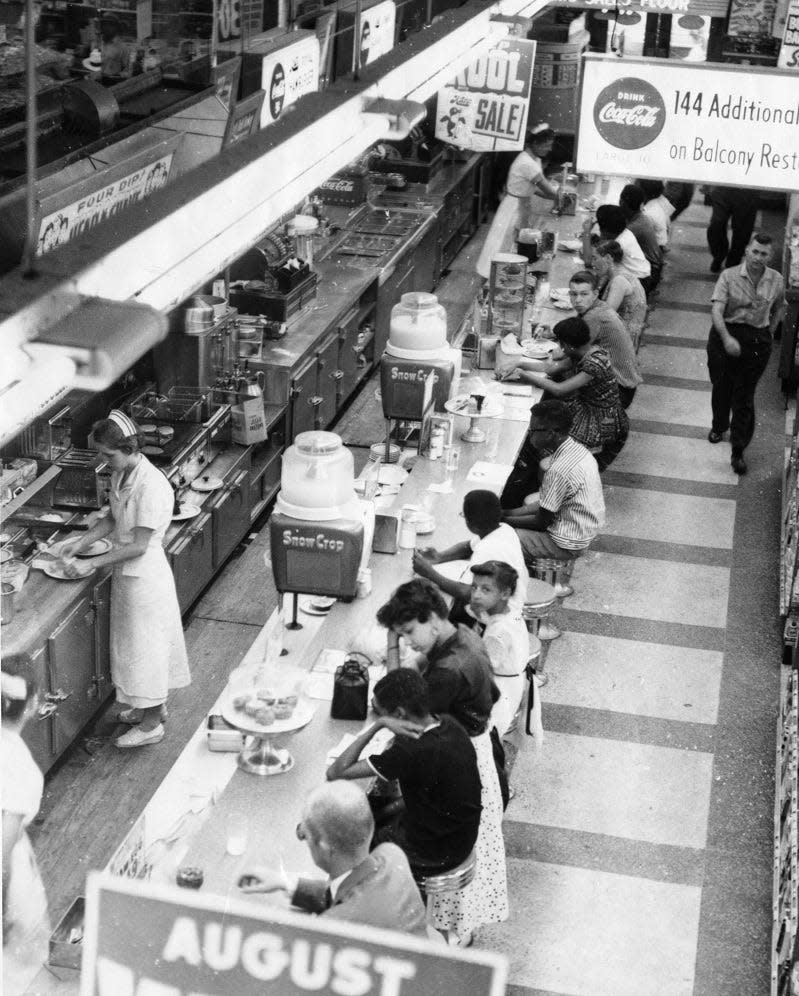
Much progress has been made over the last five years in telling this story more broadly, Beatty said. It was a convergence of several things that happened in 2018. That year, the Freedom Center was given historic landmark recognition by the Oklahoma City Council and the first sit-in reenactment took place.
Also, OKC Mayor David Holt was elected and was proactive about telling this story, Beatty said. Holt that year formed a committee to find a way to commemorate Luper in a public monument that will be placed downtown.
"For too long, we have sort of pushed commemoration of the civil rights movement in our city and honoring African American heroes to the northeast," Holt said in 2022. "Civil rights history is Oklahoma City history, and it needs to exist in the heart of our city where all people ... (can) be a part of it and engage with it."
Finally, conversations began in 2018 on what projects would be included in MAPS 4 and an opportunity arose for the Freedom Center to be included along with a new Civil Rights Center on the same property.
While the Freedom Center's restoration was moved out of MAPS 4 when private funds were secured, the Civil Rights Center will be built with $17.1 million in MAPS dollars and Beatty said they're looking at a 2026 or 2027 opening. The new building will consist of exhibition and programming areas, a café, welcome center, outdoor and events spaces, and has a $9.6 million operating fund through MAPS 4.
"We are just extremely grateful for the opportunity to really tell the story in a much more expansive way," Beatty said. "There is so much for Oklahoma to be proud of about what happened here and it's important for young people to understand the legacies that they have inherited."
The impact Luper has on Oklahoma City 65 years later
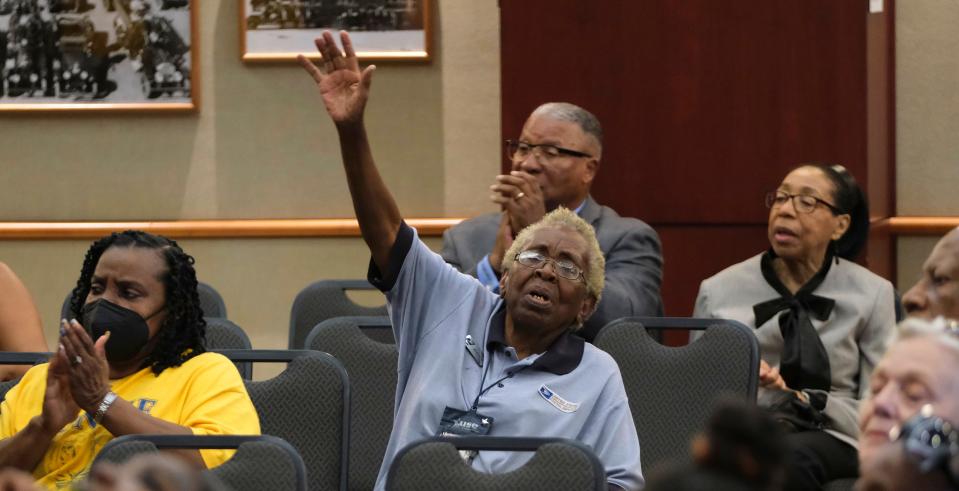
Not only did Luper's work impact her students at the time, and every Black person in America dealing with the harsh realities of segregation, but her legacy impacts even those who were born after her death.
Beatty's daughter just turned 9, the same age as some of the sit-in students.
"One of the things that is most important to remember is that this history isn't so distant," Beatty said. "(It's) the difference between my parents, myself and my daughter. It's a completely different world that I've been able to live in and that my daughter has been able to live in because of what Clara Luper and her students did."
Shalondra Harrison, executive director of Sally’s List, an organization that trains and supports women to run for government office in Oklahoma, said she was never told about Luper when she was growing up in McAlester. It was only when she moved to Oklahoma City to finish college at the University of Central Oklahoma that she learned about Luper, the sit-ins and the advocacy of her students and other Oklahoma residents during the civil rights movement.
“We talk a lot about futurism now, but they really led the way for that,” Harrison said. “And if it weren’t for them and the work that they did and the groundwork that they laid, I would not be able to be in this position.”
Harrison said the knowledge and bravery of Luper and her students inform how she looks at the work she does to improve communities throughout the state.
“I just think about, how many women are doing similar work that nobody knows about? How do I connect with them? How do I get them engaged? So, being able to have access to the words and experiences of Clara Luper really does help energize and inspire young people to think that a better society is possible.”
Clara Luper celebrated in Oklahoma City
Her name is found throughout the city in efforts to honor her legacy, including the downtown Clara Luper Post Office building, Oklahoma City Public Schools Clara Luper Center for Educational Services and the Clara Luper Corridor on NE 23, from Interstate 235 to Interstate 35.
Over the summer, 40 OKC-area teachers attended the Clara Luper Teacher Institute to learn about her legacy and how to use her "radical love" methodology in their own classrooms. The University of Oklahoma named its African and African American Studies department for Luper in 2018.
Soon there will be a monument honoring Luper and her students across from where Katz Drug Store once stood, at Robinson and Main, known as the Clara Luper Sit-In Plaza. The Clara Luper Civil Rights Center, a MAPS 4 project adjacent to the historic Freedom Center where Luper and the NAACP Youth Council met, is in the design stage now. The Freedom Center is also being restored and will act as a historical artifact, project director Christina Beatty said.
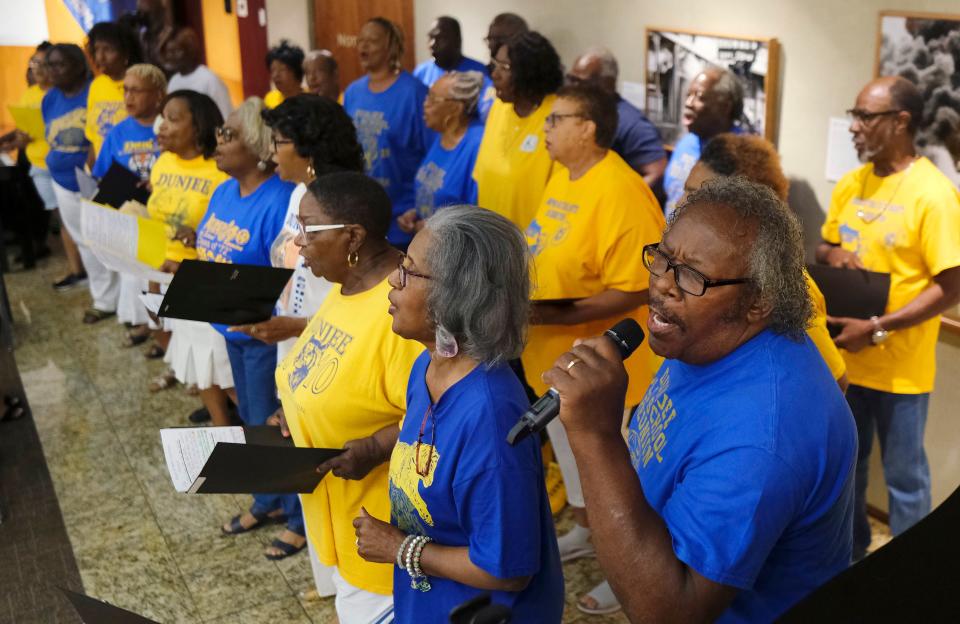
Luper's lasting impact on students
As a ninth-grader taking history in 1969, Brent Gooden recalls Luper "brought history to life" for her students.
She used experiential teaching techniques, having her students reenact history rather than simply learn through a textbook. Instead of reading about the electoral college, Gooden's class grouped into their own states and held their own presidential elections.
The year she taught Gooden she was also helping the city's sanitation workers fight for fair treatment and eventually go on strike.
"We knew she was a very important figure," Gooden said. "We also were very much aware that she knew the Rev. Martin Luther King (Jr.) ... We were all aware of it, but I don't think it had resonated with us how historic of a person we had the privilege to teach us."
Even after he left Luper's class, he maintained a relationship with her. Gooden remembers visiting her at the Oklahoma State Fair, where she would set up a trailer to fry catfish, raising scholarship money for the NAACP youth.
"Some people break bread, we ate catfish together and had a great time," Gooden said. "She was always interested in what you were doing ... and you just felt so important around her and she would just lift you up."
Living History: 65 years after Clara Luper led OKC's sit-in, participants carry the torch
Saidy Orellana, multicultural officer for the Oklahoma Historical Society, said she found the story of Luper’s life “inspirational” as she conducted interviews with Luper’s students and daughter Marilyn Luper Hildreth for a recent documentary.
“It’s so encouraging because her students are alive now, telling the story and telling us what they went through, but also reminding us of the areas where we can continue to do the work,” Orellana said. “It’s not just about what happened in the past, but it’s also for us to continue the work of what they’ve done in creating safe spaces for everyone.”
Orellana, who remembers the political and physical persecution her own father faced, said learning about Luper’s courage directly from her students has emboldened her to continue working toward a better future.
“It’s a big life lesson, and it’s powerful,” Orellana said. “It just gives me hope that, although she and her students had to go through so many hardships and put their lives at risk, now the next generation has a wider path where we can continue to do the work of inclusivity and acceptance.”
J.D. Baker, an OU graduate and platform manager for Cortado Ventures, remembers well the lessons his grandmother, Geraldine Carr Downey, learned from her schoolteacher Clara Luper. Now in his late 20s, Baker recalls interacting with Luper in her late 70s and 80s.
“Clara Luper took a special attention and affinity to youth and kids, and that’s always been her passion,” Baker said. “She would take the time to talk to you as a kid and she would instill something in you, to make sure that you knew that all of the opportunity in the world belongs to you.”
But Baker also said that, along with celebration of her life and her accomplishments, people needed to remember the sacrifices that her advocacy entailed.
“Let’s talk about the sacrifice,” Baker said. “It’s not just enough to put up statues and put up buildings. I want people to realize how much she sacrificed — not only why she sacrificed, but how much she sacrificed. And the big question that we have to ask ourselves is, would we be willing to sacrifice the same thing for the freedom that we have today? Because Clara Luper did that.”
This article originally appeared on Oklahoman: 65 years after OKC sit in, Clara Luper's legacy of love alive today

